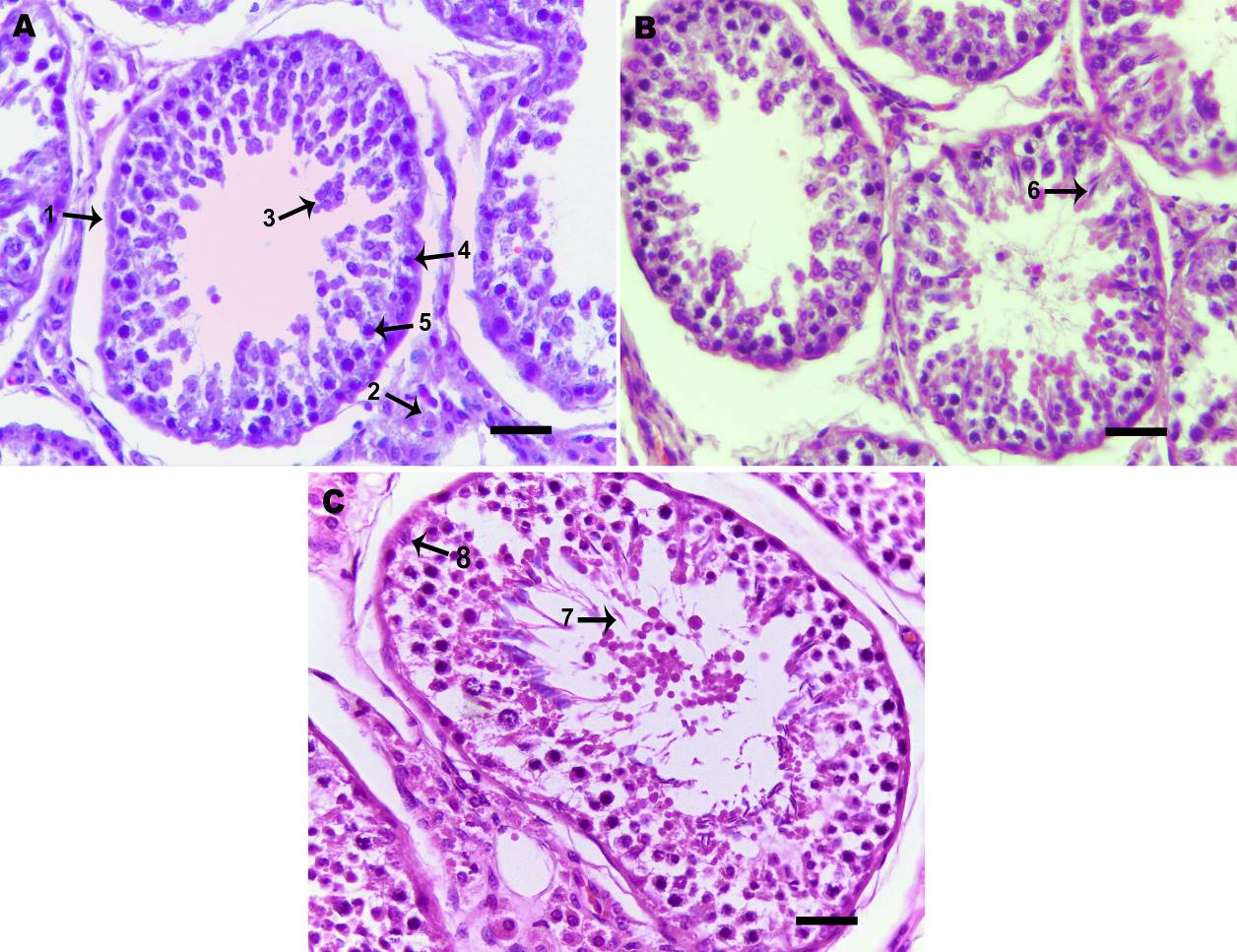Histopathological evaluation and expression profile of PRM-1, TNP-2, 17Β-HSD3, LHR, MHC-I, MIC-B, NC1 and NC3 genes in bovine testis
DOI:
https://doi.org/10.21708/avb.2021.15.2.9539Abstract
Histopathological and spermatogenesis classification by Johnsen is widely used in the germinal epithelium maturation analysis, besides identifying pathological alterations able to cause subfertility and even infertility. The aim of this study was to analyze cell-differentiation histopathological data and to correlate them with expression of PRM-1, TNP-2, 17β-HSD3, LHR, generic MHC-I, MIC-B, NC1 and NC3 genes, involved in bovine spermatogenesis using qRT-PCR from testicular parenchyma. Based on Johnsen’s criteria, the results showed normal spermatogenic activity in these animals, classified at 6, 7 and 8 scores. The qRT-PCR analysis expression showed that MHC-I (generic) gene was less expressed than all the other genes in evaluated scores (p ˂ 0.05) and, PRM-1 and TNP-2 were the most expressed genes (p ˂ 0.05). The PRM-1 gene expression was significantly higher than TNP-2 (p ˂ 0.05). Comparing scores, 17β-HSD3 gene expression was lower (p ˂ 0.05) in score 6 when compared to scores 7 and 8 animals. It was also observed that PRM-1 expression was lower in score 6 when compared to 7, as well as TNP-2 gene was less expressed in the score 6 (p ˂ 0.05) when compared to 7 and 8 scores. Our results demonstrated that MHC I (generic), MIC-B, NC1, NC3, and LHR genes are poorly expressed in bovine testis, suggesting their marginal action on spermatogenesis. Instead, PRM-1, TNP-2, and 17β-HSD3 expression were higher, supporting the notion that these genes can act directly on the germ cells differential development during bovine spermatogenesis.
Downloads

Downloads
Pubblicato
Fascicolo
Sezione
Licenza
Autores que publicam na Acta Veterinaria Brasilica concordam com os seguintes termos: a) Autores mantém os direitos autorais e concedem à revista o direito de primeira publicação, com o trabalho simultaneamente licenciado sob a Licença Creative Commons Attribution que permite o compartilhamento do trabalho com reconhecimento da autoria e publicação inicial nesta revista. b) Autores têm autorização para assumir contratos adicionais separadamente, para distribuição não-exclusiva da versão do trabalho publicada nesta revista (ex.: publicar em repositório institucional ou como capítulo de livro), com reconhecimento de autoria e publicação inicial nesta revista. c) Autores têm permissão e são estimulados a publicar e distribuir seu trabalho online (ex.: em repositórios institucionais ou na sua página pessoal) a qualquer ponto antes ou durante o processo editorial, já que isso pode gerar alterações produtivas, bem como aumentar o impacto e a citação do trabalho publicado (Veja O Efeito do Acesso Livre).


 Esta obra está licenciada com uma Licença
Esta obra está licenciada com uma Licença 